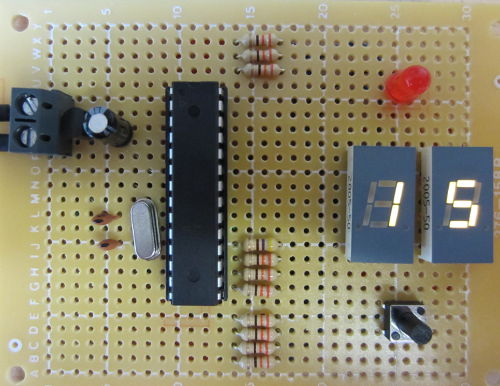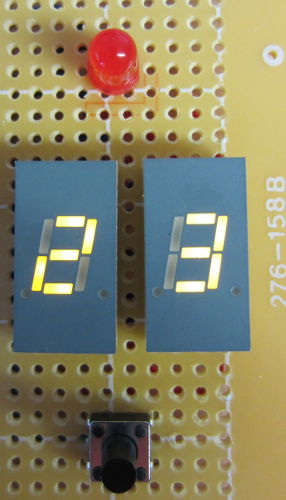Pictured below is a project we completed for a day countdown timer for an egg incubator.

It is important to keep track of the number of days that the eggs have been in the incubator waiting to hatch. When the user turns on the incubator and puts in the eggs, he uses the button on the timer to programme in the number of days that the eggs have until they are due to hatch. The timer then starts, and every day the day count display reduces by one until it eventually gets down to zero and the eggs hatch.
In order to build this we used a standalone Arduino set up. The external clock crystal gives pretty good time accuracy (used in conjunction with the Arduino millis() function). However, it is still essential to calibrate it to confirm it will be reliable over the 30 days or less that this incubator timer is likely to have to countdown.
In order to calibrate we temporarily programmed the timer to countdown hours (3,600,000 milliseconds) instead of days and left it running for 12 hours. Using an accurate stopwatch we timed how long it took the timer to run for its ’12 hours’ to compare it with the real 12 hours of the stopwatch. We then calculated by how much we needed to increase or decrease the number of milliseconds in the Arduino ‘hour’ so that its hour would match a real hour giving a very accurate timer. With this particular Arduino chip and clock crystal combination the Arduino lost less than a second in 12 hours even before the calibration.

To display the number of days until hatching we used two 7-segment LED displays which we multiplexed. Multiplexing takes advantage of persistence in the eye. If you light up one display quickly, then the other display, then the first again, and so on, the eye sees both displays on at the same time (as does a camera if the shutter speed is slower than the time taken to light up both displays – see above!). This technique makes it possible to control lots of LED displays without needing too many output pins on the microprocessor – just seven for the LED segments which are connected in parallel, and one for each display’s ground connection (if you use common cathode LED displays).